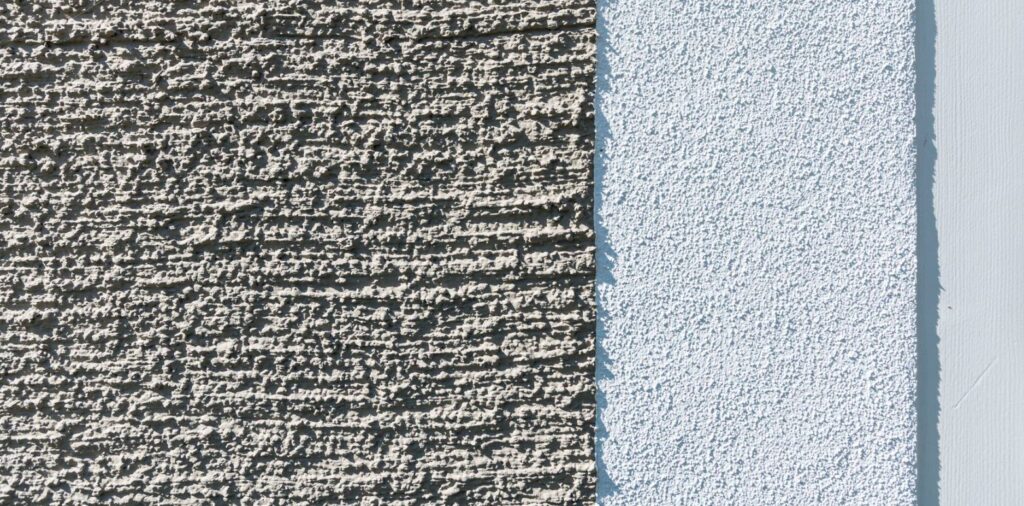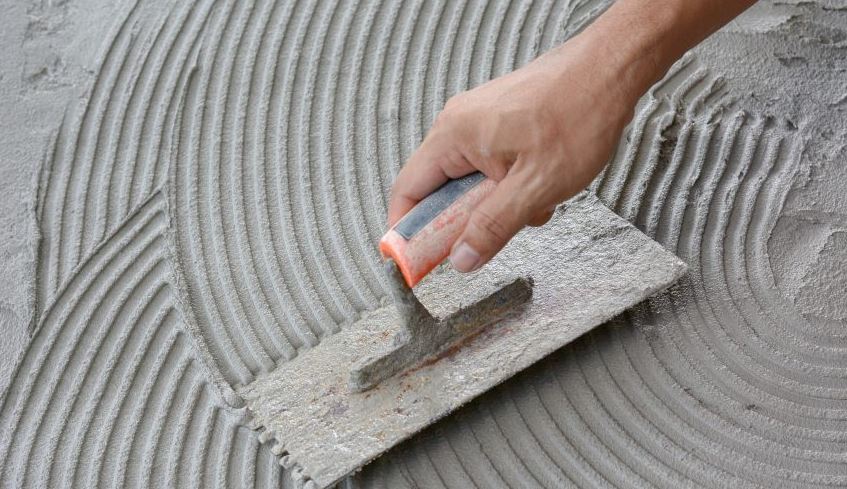In the vast world of interior design, cement rendering is making waves like never before. Historically recognized for its robust and protective role in building exteriors, this versatile material has creatively journeyed from the façade of homes to becoming a star player in interior transformations.
As homeowners and designers seek fresh, sustainable, and modern design aesthetics, cement rendering has emerged as an avant-garde solution that fuses function with finesse. Dive into this article to explore how cement rendering can be the key to unlocking a new realm of decorative possibilities inside your home.

What is Cement Rendering?
Cement rendering is the art of applying a mix of cement, sand, and sometimes lime to a wall or surface, whether brick, stone, or mud brick. Its primary composition sees a balance between cement and sand, providing a textured or smooth finish, which acts as armour against the external environment. Originally, cement rendering’s most common use was to coat the exterior of houses. It served a dual purpose: protection from weather elements and enhanced aesthetic appeal. Think of historical buildings, Mediterranean homes, or even ancient constructions; cement rendering has been integral to building practices for centuries, albeit in different forms and compositions.
Benefits of Cement Rendering Inside the Home
Cement rendering is no longer just an external wall treatment; its benefits have found resonance inside our homes as well:
- Durability: One of the prime advantages of using cement rendering indoors is its ability to withstand wear and tear. Unlike wallpapers or paints, which may chip, peel, or fade over time, a well-done cement render can last for years with minimal maintenance.
- Versatility: The malleability of cement render means it can be moulded and shaped into different textures, patterns, and finishes. This adaptability gives designers a canvas to showcase creativity and gives homeowners the flexibility to change and adapt to evolving tastes.
- Improved Insulation: A cement-rendered wall can provide added insulation, both thermal and acoustic, to your home, making it cooler in the summers and warmer in the winters.
- Aesthetic Appeal: The sleek, modern, and industrial appearance of cement renders can transform any space, making it look contemporary and chic.
Popular Interior Applications
While traditionally used for exteriors, here’s how cement rendering can change the game inside the home:
- Feature Walls: These walls act as a focal point in rooms. A cement-rendered feature wall can add depth and character in a living room or bedroom. Plus, with various texturing techniques, every feature wall can have its unique charm.
- Fireplaces: The fire resistance qualities of cement rendering are a boon for fireplace surrounds. While it enhances safety, the aesthetic transformation it provides to traditional fireplaces is undeniable.
- Floors: Who said cement is only for walls? As a flooring solution, cement rendering presents a cost-effective, durable, and low-maintenance alternative to conventional floorings like wood or tiles.
- Bathroom Walls: The water-resistant quality of cement renders makes it a perfect fit for bathrooms. Plus, the smooth finish offers a spa-like, luxe modern ambience.
- Kitchen Backsplashes: For a kitchen, cleanliness is paramount. Cement-rendered backsplashes provide an easy-to-clean, seamless backdrop against culinary adventures.
Techniques & Finishes
Cement rendering can be as unique as one’s imagination. Here’s a look at some popular finishes:

- Smooth Finish: Aimed at achieving a sleek, minimalist, and modern look, a smooth finish is perfect for contemporary homes.
- Textured Finish: For those who crave character and depth in their interiors, a textured finish is the way to go. By incorporating patterns, a room can instantly have an elevated look.
- Trowel Finish: This provides a rustic or industrial touch. It’s all about creating that raw, unpolished, but incredibly stylish ambience.
- Coloured Render: Gone are the days when cement was just grey. With the addition of pigments, cement rendering can now adopt various shades, adding a burst of colour to spaces.
Care and Maintenance
Apart from its aesthetic appeal, cement rendering’s beauty lies in its relatively hassle-free maintenance. Here’s a quick guide on how to keep it in tip-top shape:
- Tips on Cleaning Rendered Surfaces: Unlike painted walls that may lose colour or wallpapers that might peel, cement-rendered surfaces can be cleaned with mild soapy water and a soft brush. For tougher stains, a gentle pH-neutral detergent will do the trick. However, avoid abrasive chemicals or high-pressure washing to prevent damage.
- The Importance of Sealing: Cement-rendered walls and floors can stain like any other surface. Applying a sealant post-rendering, especially in high-traffic or moisture-prone areas, is crucial to prevent unwanted stains and ingress.
- Longevity and Potential for Touch-ups: The best part about cement rendering is its long lifespan. However, should minor damages occur, spot touch-ups are feasible without redoing the entire surface. This ensures that the rendered surfaces look fresh for years to come.
Cost Implications
Every homeowner wants value for money, and understanding the financial implications is key:
- Cost Comparison with Other Interior Finishes: While the upfront cost of cement rendering may seem higher compared to paint or wallpaper, its longevity and minimal maintenance often make it a cost-effective solution in the long run.
- Factors Affecting the Price: The final price isn’t just about materials. Surface area, chosen finish (textured, coloured, or smooth), and labour costs can all influence the total cost. It’s always best to get a detailed quote before commencing.
Considerations Before Choosing Cement Rendering
Before diving into the world of cement rendering, some pre-planning and considerations can make the process smoother:
- Assessing the Structure of the Home: Not all walls may be suitable for cement rendering. An assessment to ensure the structural integrity and appropriateness of surfaces is essential.
- Moisture Levels and Ventilation Considerations: Cement rendering in moisture-heavy areas requires proper ventilation to prevent mould growth and other related issues.
- Hiring Professionals vs. DIY: While the DIY route might seem enticing, cement rendering requires expertise for that flawless finish. Professionals can ensure consistency, address challenges, and offer guidance on the best techniques and finishes.
Cement rendering is not just a trend; it’s a revolution in interior design. From its robust nature to its seamless appeal, it offers a unique blend of function and aesthetics. Homeowners seeking a harmonious blend of tradition and modernity, durability, and design can find their answer in this versatile material. As we’ve journeyed through its myriad applications and benefits, it’s evident that cement rendering holds transformative potential for interiors. So, the next time you think of giving your space a facelift, remember the cemented charm and consider embracing it for a chic, lasting impression.